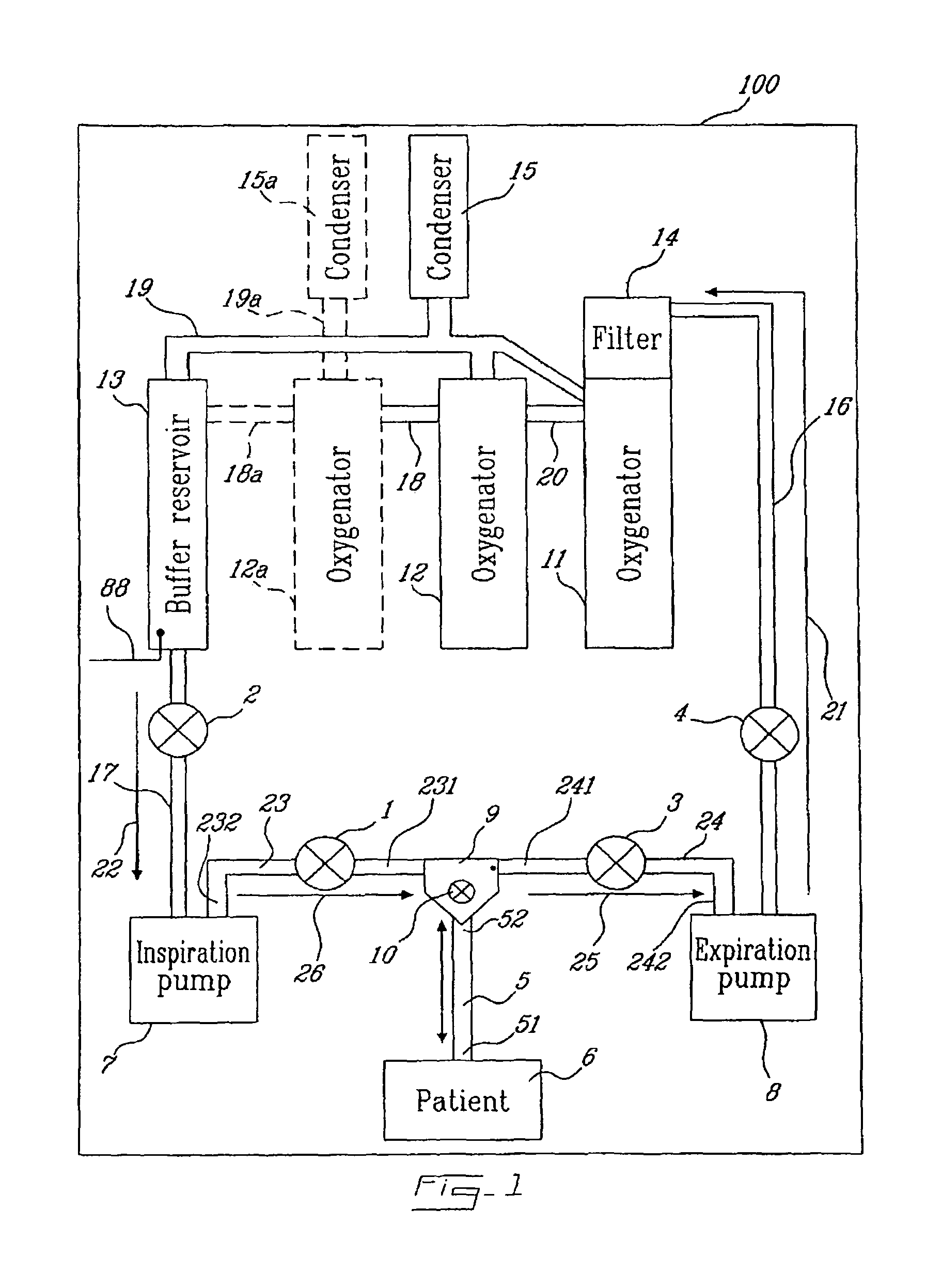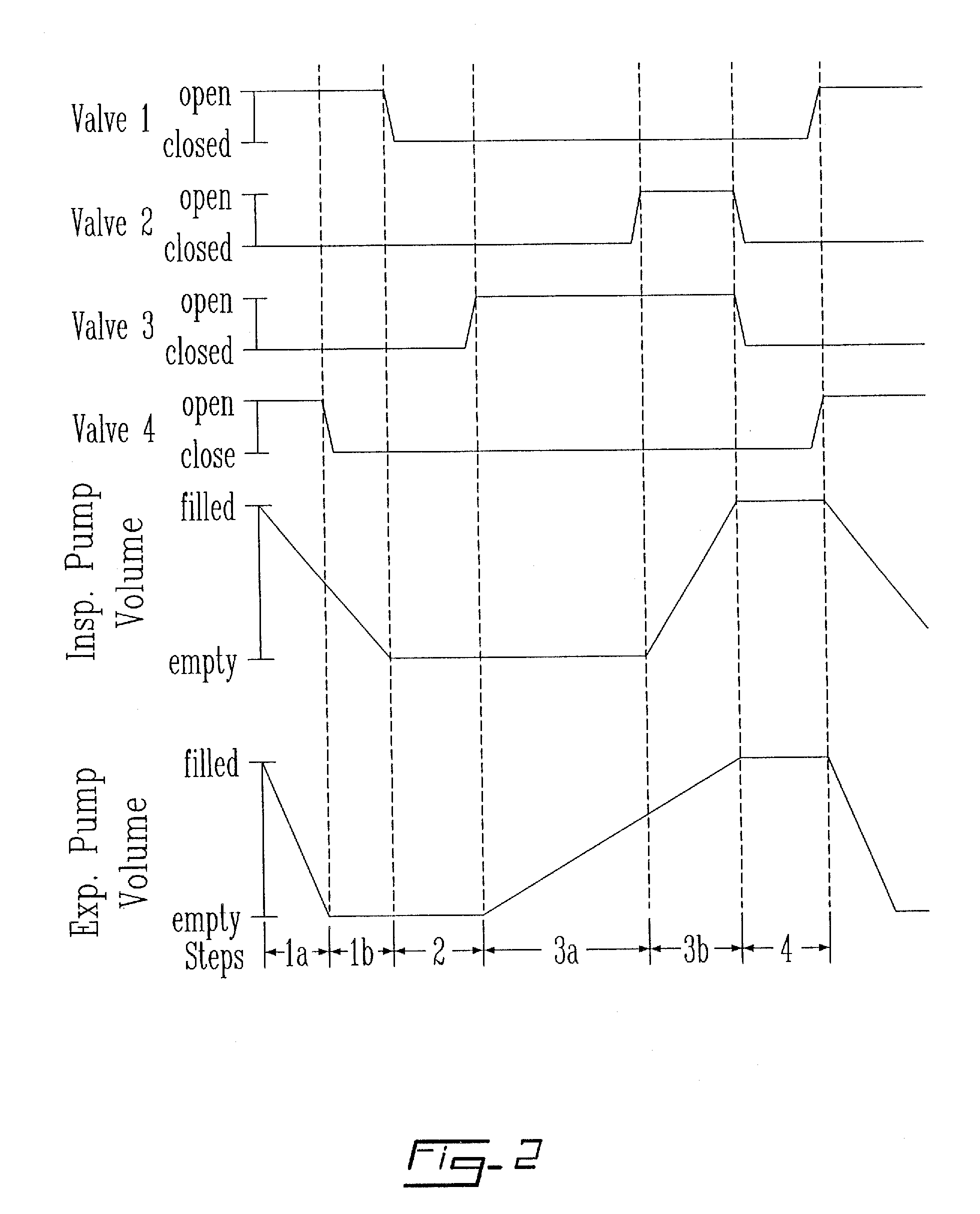Method and apparatus for conducting total liquid ventilation with control of residual volume and ventilation cycle profile
a technology of residual volume and ventilation cycle, applied in the direction of respirator, operating means/releasing devices of valves, prosthesis, etc., can solve the problems of insufficient oxygenation of arterial blood and internal organs, unable to achieve adequate monitoring and control of all ventilation parameters, and unable to achieve optimal ventilation by artificial means
- Summary
- Abstract
- Description
- Claims
- Application Information
AI Technical Summary
Problems solved by technology
Method used
Image
Examples
Embodiment Construction
[0037]A major objective of the illustrative embodiment of the present invention is to provide a total liquid ventilator system that is not only user friendly but also sufficiently efficient, safe and reliable for bringing TLV into intensive care units. This implies development and integration of numerous components, including pump(s), oxygenator(s), heating element(s) condenser(s), a filter and a programmable controller (PLC), for example the central processing unit (CPU) of FIG. 12. Moreover, in view of using the total liquid ventilator system with all types of patients, from premature newborn children to adults, the system according to the illustrative embodiment of the present invention should be made adaptable without the need for re-sizing and changing all components.
[0038]Modular and integrated features of the illustrative embodiment of the present invention meet with these requirements. More specifically, the illustrative embodiment of the present invention provides a module ...
PUM
 Login to View More
Login to View More Abstract
Description
Claims
Application Information
 Login to View More
Login to View More - R&D
- Intellectual Property
- Life Sciences
- Materials
- Tech Scout
- Unparalleled Data Quality
- Higher Quality Content
- 60% Fewer Hallucinations
Browse by: Latest US Patents, China's latest patents, Technical Efficacy Thesaurus, Application Domain, Technology Topic, Popular Technical Reports.
© 2025 PatSnap. All rights reserved.Legal|Privacy policy|Modern Slavery Act Transparency Statement|Sitemap|About US| Contact US: help@patsnap.com



